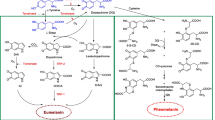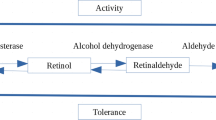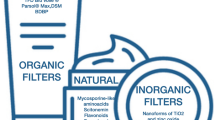Abstract
Environmental stimuli can lead to the excessive accumulation of reactive oxygen species (ROS), which is one of the risk factors for premature skin aging. Here, we investigated the protective effects of 7-MEGA™ 500 (50% palmitoleic acid, 7-MEGA) against oxidative stress-induced cellular damage and its underlying therapeutic mechanisms in the HaCaT human skin keratinocyte cell line (HaCaT cells). Our results showed that treatment with 7-MEGA prior to hydrogen peroxide (H2O2)-induced damage significantly increased the viability of HaCaT cells. 7-MEGA effectively attenuated generation of H2O2-induced reactive oxygen species (ROS), and inhibited H2O2-induced inflammatory factors, such as prostaglandin E2 (PGE2), tumor necrosis factor-α (TNF-α), and interleukin-1β (IL-1β). In addition, cells treated with 7-MEGA exhibited significantly decreased expression of matrix metalloproteinase-1 (MMP-1) and increased expression of procollagen type 1 (PCOL1) and Elastin against oxidative stress by H2O2. Interestingly, these protective activities of 7-MEGA were similar in scope and of a higher magnitude than those seen with 98.5% palmitoleic acid (PA) obtained from Sigma when given at the same concentration (100 nL/mL). According to our data, 7-MEGA is able to protect HaCaT cells from H2O2-induced damage through inhibiting cellular oxidative stress and inflammation. Moreover, 7-MEGA may affect skin elasticity maintenance and improve skin wrinkles.These findings indicate that 7-MEGA may be useful as a food supplement for skin health.
Article PDF
Similar content being viewed by others
Avoid common mistakes on your manuscript.
Abbreviations
- 7-MEGA:
-
7-MEGA™ 500
- COX-2:
-
cyclooxygenase-2
- DPPH:
-
2,2-diphenyl-1-picrylhydrazyl
- H2O2 :
-
hydrogen peroxide
- IL-1β:
-
interleukin-1β
- MMP-1:
-
matrix metalloprotease-1
- MTT:
-
3-(4,5-dimethylthiazol-2-yl)-2,5-diphenyltetrazolium bromide
- PA:
-
palmitoleic acid
- PCOL1:
-
pro-collagen type 1
- PGE2 :
-
prostaglandin E2
- ROS:
-
reaction oxygen species
- TNF-α:
-
tumor necrosis factor-α
References
Fisher, G.J. (2002) Mechanisms of photoaging and chronological skin aging. Arch. Dermatol., 138, 1462–1470.
Halliwell, B. and Gutteridge, J.M. (1985) The importance of free radicals and catalytic metal ions in human diseases. Mol. Aspects Med., 8, 89–193.
Ozben, T. (2007) Oxidative stress and apoptosis: impact on cancer therapy. J. Pharm. Sci., 96, 2181–2196.
Otton, R., Marin, D.P., Bolin, A.P., de Cássia Santos Macedo, R., Campoio, T.R., Fineto, C., Jr., Guerra, B.A., Leite, J.R., Barros, M.P. and Mattei, R. (2012) Combined fish oil and astaxanthin supplementation modulates rat lymphocyte function. Eur. J. Nutr., 51, 707–718.
Calder, P.C. (2008) Polyunsaturated fatty acids, inflammatory processes and inflammatory bowel diseases. Mol. Nutr. Food Res., 52, 885–897.
Bazan, N.G. (2007) Omega-3 fatty acids, pro-inflammatory signaling and neuroprotection. Curr. Opin. Clin. Nutr. Metab. Care, 10, 136–141.
Park, J.M., Kwon, S.H., Han, Y.M., Hahm, K.B. and Kim, E.H. (2013) Omega-3 polyunsaturated Fatty acids as potential chemopreventive agent for gastrointestinal cancer. J. Cancer Prev., 18, 201–208.
Whigham, L.D., Watras, A.C. and Schoeller, D.A. (2007) Efficacy of conjugated linoleic acid for reducing fat mass: a meta-analysis in humans. Am. J. Clin. Nutr., 85, 1203–1211.
Finucane, O.M., Lyons, C.L., Murphy, A.M., Reynolds, C.M., Klinger, R., Healy, N.P., Cooke, A.A., Coll, R.C., McAllan, L., Nilaweera, K.N., O’Reilly, M.E., Tierney, A.C., Morine, M.J., Alcala-Diaz, J.F., Lopez-Miranda, J., O’Connor, D.P., O’Neill, L.A., McGillicuddy, F.C. and Roche, H.M. (2015) Monounsaturated fatty acid-enriched high-fat diets impede adipose NLRP3 inflammasome-mediated IL-1β secretion and insulin resistance despite obesity. Diabetes, 64, 2116–2128.
Maguire, L.S., O’Sullivan, S.M., Galvin, K., O’Connor, T.P. and O’Brien, N.M. (2004) Fatty acid profile, tocopherol, squalene and phytosterol content of walnuts, almonds, peanuts, hazelnuts and the macadamia nut. Int. J. Food Sci. Nutr., 55, 171–178.
Anderson, M.M., Hazen, S.L., Hsu, F.F. and Heinecke, J.W. (1997) Human neutrophils employ the myeloperoxidase-hydrogen peroxide-chloride system to convert hydroxy-amino acids into glycolaldehyde, 2-hydroxypropanal, and acrolein. A mechanism for the generation of highly reactive alpha-hydroxy and alpha,beta-unsaturated aldehydes by phagocytes at sites of inflammation. J. Clin. Invest., 99, 424–432.
Souza, C.O., Teixeira, A.A.S., Lima, E.A., Batatinha, H.A.P., Gomes, L.M., Carvalho-Silva, M., Mota, I.T., Streck, E.L., Hirabara, S.M. and Rosa Neto, J.C. (2014) Palmitoleic acid (n-7) attenuates the immunometabolic disturbances caused by a high-fat diet independently of PPARalpha. Mediators Inflamm., 2014, 582197.
Furuno, K., Akasako, T. and Sugihara, N. (2002) The contribution of the pyrogallol moiety to the superoxide radical scavenging activity of flavonoids. Biol. Pharm. Bull., 25, 19–23.
Babior, B. M. (2000) Phagocytes and oxidative stress. Am. J. Med., 109, 33–44.
Slater, T. F. (1984) Free-radical mechanisms in tissue injury. Biochem J., 222, 1–15.
Shanker, G., Syversen, T., Aschner, J.L. and Aschner, M. (2005) Modulatory effect of glutathione status and antioxidants on methylmercury-induced free radical formation in primary cultures of cerebral astrocytes. Brain Res. Mol. Brain Res., 137, 11–22.
Wu, Q., Li, H., Qiu, J. and Feng, H. (2014) Betulin protects mice from bacterial pneumonia and acute lung injury. Microb. Pathog., 75, 21–28.
Choi, W.S., Shin, P.G., Lee, J.H. and Kim, G.D. (2012) The regulatory effect of veratric acid on NO production in LPS-stimulated RAW264.7 macrophage cells. Cell. Immunol., 280, 164–170.
Raz, A., Wyche, A., Siegel, N. and Needleman, P. (1988) Regulation of fibroblast cyclooxygenase synthesis by interleukin-1. J. Biol. Chem., 263, 3022–3028.
Feldman, M., Taylor, P., Paleolog, E., Brennan, F.M. and Maini, R.N. (1998) Anti-TNF alpha therapy is useful in rheumatoid arthritis and Crohn’s disease: analysis of the mechanism of action predicts utility in other diseases. Transplant. Proc., 30, 4126–4127.
Stetler-Stevenson, W.G. and Yu, A.E. (2001) Proteases in invasion: matrix metalloproteinases. Semin. Cancer Biol., 11, 143–152.
Vincenti, M.P., White, L.A., Schroen, D.J., Benbow, U. and Brinckerhoff, C.E. (1996) Regulating expression of the gene for matrix metalloproteinase-1 (collagenase): mechanisms that control enzyme activity, transcription, and mRNA stability. Crit. Rev. Eukaryot. Gene Expr., 6, 391–411.
Quan, T., Qin, Z., Xia, W., Shao, Y., Voorhees, J.J. and Fisher, G.J. (2009) Matrix-degrading metalloproteinases in photoaging. J. Investig. Dermatol. Symp. Proc., 14, 20–24.
Pentland, A.P., Shapiro, S.D. and Welgus, H.G. (1995) Agonist-induced expression of tissue inhibitor of metalloprotein-ases and metalloproteinases by human macrophages is regulated by endogenous prostaglandin E2 synthesis. J. Invest. Dermatol., 104, 52–57.
Mauviel, A., Halcin, C., Vasiloudes, P., Parks, W.C., Kurkinen, M. and Uitto, J. (1994) Uncoordinate regulation of collagenase, stromelysin, and tissue inhibitor of metalloproteinases genes by prostaglandin E2: selective enhancement of collagenase gene expression in human dermal fibroblasts in culture. J. Cell. Biochem., 54, 465–472.
Talwar, H.S., Griffiths, C.E., Fisher, G.J., Hamilton, T.A. and Voorhees, J.J. (1995) Reduced type I and type III procollagens in photodamaged adult human skin. J. Invest. Dermatol., 105, 285–290.
Xu, Q., Hou, W., Zheng, Y., Liu, C., Gong, Z., Lu, C., Lai, W. and Maibach, H.I. (2014) Ultraviolet A-induced cathep-sin K expression is mediated via MAPK/AP-1 pathway in human dermal fibroblasts. PLoS ONE, 9, e102732.
Author information
Authors and Affiliations
Corresponding author
Rights and permissions
This is an Open-Access article distributed under the terms of the Creative Commons Attribution Non-Commercial License (http://creativecommons.org/licenses/by-nc/3.0) which permits unrestricted non-commercial use, distribution, and reproduction in any medium, provided the original work is properly cited.
About this article
Cite this article
Song, IB., Gu, H., Han, HJ. et al. Effects of 7-MEGA™ 500 on Oxidative Stress, Inflammation, and Skin Regeneration in H2O2-Treated Skin Cells. Toxicol Res. 34, 103–110 (2018). https://doi.org/10.5487/TR.2018.34.2.103
Received:
Revised:
Accepted:
Published:
Issue Date:
DOI: https://doi.org/10.5487/TR.2018.34.2.103




